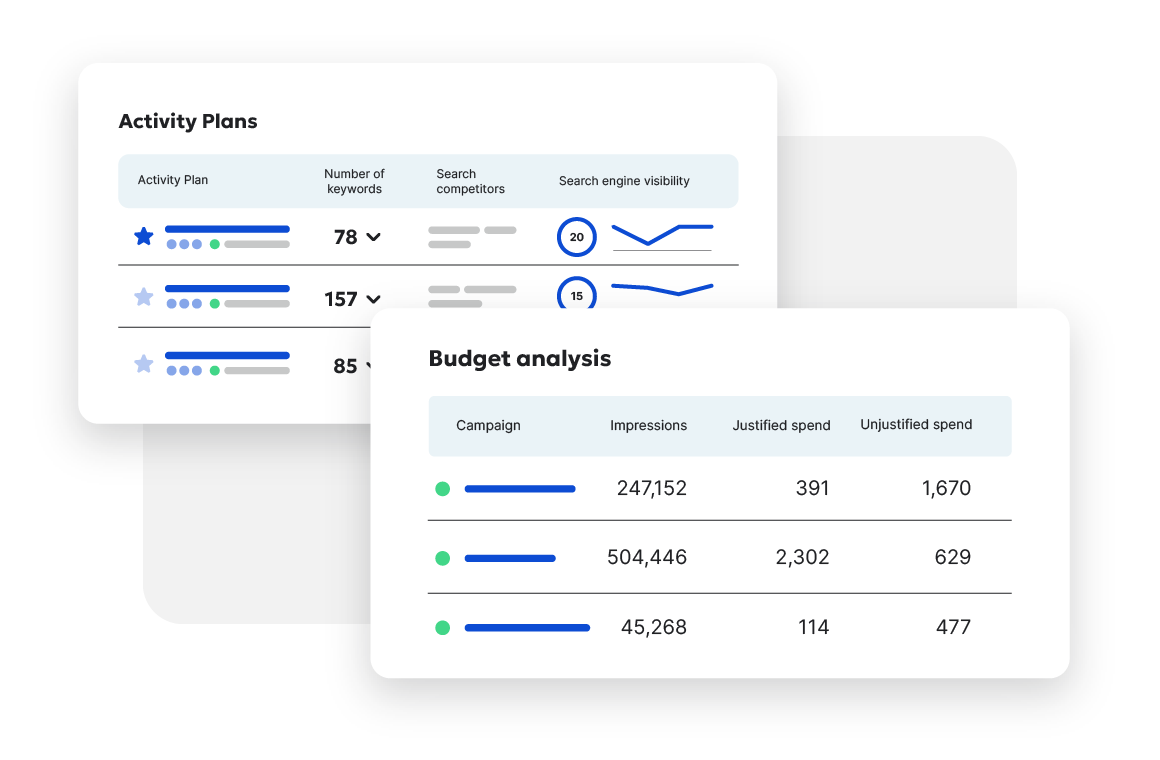About 27% of all website traffic comes from paid search and 53% comes from organic search, making it critical for businesses to have a search strategy that includes both channels. Unfortunately, many companies miss out on the synergy that comes from running paid and organic search as one, holistic search strategy.
Most often, organic and paid search programs run independently—with PPC and SEO sitting on different teams, using different budgets, measuring different KPIs, and neglecting to share data or insights.
A holistic search strategy is key to a competitive and cost-effective search program. And a strong search program is a lynchpin in a robust digital marketing strategy.
What is holistic search?
Holistic search combines insights and data from paid and organic channels to create a cohesive, symbiotic search strategy for both channels.
This approach allows you to maximize your presence on search engine results pages and work towards driving overall search performance for every stage of the customer journey.
Four advantages of holistic search
Running a holistic search program has many advantages for both SEO specialists, marketing decision makers, and the overall business. Here, we’ve distilled the main benefits down to four key advantages.
1. Better visibility up and down the funnel
When you implement a holistic search strategy, your brand will appear across the full funnel of user searches. By having upper funnel organic results, as well as bottom funnel paid results, you give users multiple entry points they can choose based on where they are in the funnel.
Users no longer move through the search funnel linearly, but rather bounce between stages of the funnel. By presenting top, middle, and bottom funnel options, your brand can cater to user needs for a particular search.
2. Smarter, targeted spending
A holistic search strategy allows you to make better decisions about budget allocation. If, for example, you only look at PPC spend, you might find branded keywords have a very high click through or conversion rate. However, if your brand ranks number one organically for those same keywords, then you’re paying for clicks you would probably get from organic anyway.
A holistic approach allows you to put budget towards PPC while you improve your organic performance, then slowly back off paid spending as your organic rankings improve.
Ultimately, this ensures your budget is put towards areas that you can’t rank well for organically—meaning you pay for the clicks that are really valuable to your brand.
3. Faster, more informed decision making
When you look at search data holistically, you can start to make better decisions for both paid and organic channels.
For example, when looking at new keywords to use in your SEO program, you can test how well those keywords perform in PPC (you can even test headlines or CTAs). You can also look at your SEO data to discover new keywords that can then be used in your PPC campaigns. Or, identify high performing keywords that have a limited reach through either PPC or SEO, then move those keywords to the higher performing channel.
By looking at your data holistically, you can determine the most effective messaging, CTAs, and targeting across your search channels much quicker than if you were looking at a single set of data.
4. Minimize risk
There’s inherent risk to both SEO and PPC. When it comes to SEO, your brand can face challenges with new algorithm updates. Strategic organic pages might move down the search rankings, or some keywords might take longer than expected to climb up the rankings.
If your brand faces a blip in rankings, then you can supplement with paid ads to maintain brand visibility while you improve your organic pages.
On the other hand, if PPC budget gets slashed or if certain keywords become too expensive, it’s a good idea to have organic pages moving up the rankings to counteract that risk.
Why aren’t more enterprises consolidating their search strategy?
If a holistic approach to search has so many advantages for enterprise organizations, then why aren’t more companies doing it? The simple answer: legacy siloed teams.
The goal of organic and paid search teams is more or less the same—drive and convert more qualified traffic to the site. But traditionally paid and organic search have been kept on different teams or even different departments.
SEO is, unfortunately, often seen as a cost center, while PPC is seen as a growth driver. But this approach leads to paid and organic teams working against each other—competing for resources and hindering each other’s progress towards KPIs.
Paid search teams are often integrated into a wider paid media, advertising, or growth marketing team. That leads to paid search being closer aligned to a company’s advertising strategy.
SEO, on the other hand, might work closely with web operations, IT, or development, which can lead to an overload on technical resources.
However, that type of setup can mean SEO efforts aren’t aligned with branded messaging, while PPC pages might suffer from a lack of technical input and be penalized due to slow load time or lack of mobile responsiveness.
Look for a tool with integrated data and insights
In order to execute on a holistic search strategy, your team needs to use a tool that offers both paid and organic data and insights. Specifically, look for a solution that offers high level reporting that’s easy to digest for both paid and organic experts, custom dashboards, and consolidated insights.
High level reporting makes it easy for everyone involved to see how each channel is performing and where there might be gaps in performance that can be covered from another channel.
Custom dashboards allow teams to view consolidated KPIs, then deep dive into specific areas of performance across paid and organic, like behavior for mobile users or specific industries or personas. Custom dashboards also allow you to create separate overviews for decision makers and stakeholders.
Ideally, you should look for a tool that offers consolidated insights beyond just data. While consolidated data from both paid and organic search is helpful, providing your team with more actionable recommendations about how they can achieve their KPIs across channels will allow your brand to take your holistic search strategy further.

Ready to improve your Search Engine Optimization?
Siteimprove SEO is an all-in-one Enterprise SEO tool that can help you achieve your digital potential.
Schedule a demo
